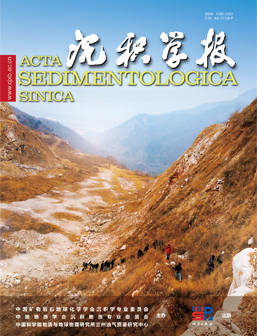Two-dimensional numerical simulation of turbidity flow characteristics along its pathway
doi: 10.14027/j.issn.1000-0550.2024.057
- Received Date: 2023-11-09
- Available Online: 2024-05-20
-
Key words:
- turbidity /
- numerical simulation /
- hydrodynamic characteristics /
- Deposition characteristics
Abstract: Numerical simulation is an important method to study turbidity current. Numerical simulation of turbidity current flow and sedimentary characteristics is of great practical significance for predicting and inverting turbidity current sedimentary environment, studying deep-water sedimentary system and exploring deep-water oil and gas resources and oil and gas reservoirs. In this paper, the numerical calculation model of turbidity current is constructed based on the layer average depth model of Kostic and Parker. By setting the initial conditions of different particle size concentration, inflow thickness and inflow velocity, the flow process and deposition characteristics of submarine turbidity current driven by suspended particles with four particle sizes at a slope of 3 % are simulated and analyzed. The simulation results show that the characteristics of the turbidity current along the way are as follows : ( 1 ) In terms of the thickness of the turbidity current, the turbidity current began to thicken at the initial stage of the evolution of the turbidity current due to the entrainment of the environmental water, but it gradually thinned with the occurrence of sedimentation during the flow process. ( 2 ) In terms of flow velocity, the evolution of turbidity current is divided into three stages : acceleration stage, uniform stage and deceleration stage. Under the condition of the same initial thickness and the same sediment concentration, the higher the content of fine-grained sediments, the more stable the turbidity current is ( that is, it can maintain a uniform motion flow for a long time ). Under the same sediment composition and concentration conditions, the thicker the turbidity current is, the more stable it is. ( 3 ) In terms of sedimentary characteristics, the sediments near the source of the turbidity current accumulate more, and the sediments are mainly accumulated at the central axis. After the central axis, the thickness of the sediments decreases monotonously. The turbidity current with large thickness and high flow rate has a smaller deposition rate, but its deposition quantity is more. These results show that the method applied in this paper is suitable for the study of field-scale turbidity currents and is expected to be applied in nature in the future.
| Citation: | Two-dimensional numerical simulation of turbidity flow characteristics along its pathway[J]. Acta Sedimentologica Sinica. doi: 10.14027/j.issn.1000-0550.2024.057 |






 DownLoad:
DownLoad: